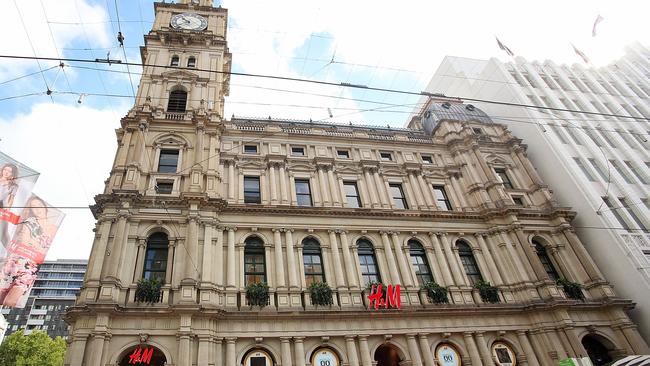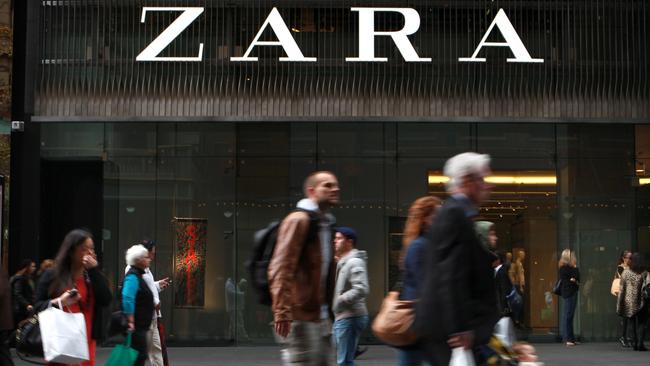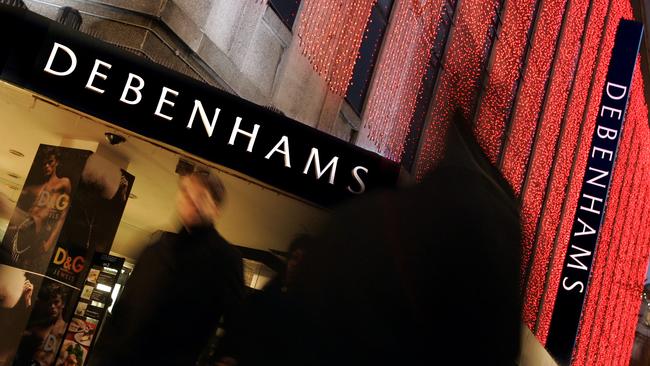US fast fashion brand Forever 21 looks set to exit Australia as Woolworths takes over flagship store
FEW customers, almost empty shelves, a fire sale. For this global retailer winning over Australia should have been a cinch. But, again, a big name has failed.
IT’S the gleaming Australian flagship store of one of the world’s biggest fashion retailers. Three floors of men’s and women’s apparel front onto Sydney’s Pitt Street — the shopping strip with the world’s seventh highest rents.
But something is wrong. While Swedish fast fashion giant H&M bustles across the road, US rival Forever 21 is eerily quiet.
Registers are cordoned off, fitting rooms closed down; everything is on sale and what stock there is looks scant — many shelves are empty.
Australian shoppers have well and truly given Forever 21 the bird.
And in a final insult, at least part of the store is to be turned into a Woolworths supermarket. It appears there’s more money in homebrand cereals than Forever 21’s skirts.

The chain, which has around 700 stores worldwide, the bulk in the US, is the latest fast fashion fail in Australia. Quietly, it looks like the brand is exiting Australia.
While H&M and Zara have shaken up the market, Topshop, Gap and now Forever 21 have licked their wounds in a country that was expected to be a pushover.
Pippa Kulmar, co-director of retail consultancy Retail Oasis, said the Australian fashion market was undergoing “recorrection” after an onslaught by global brands.
“A lot of these international players have failed to nail the Australian market. There is an intense level of competition here,” she said.


“It’s a shrinking market and a zero sum game where the only way to succeed is to take share off someone else.”
Ms Kulmar said supply chains that lagged behind the leading retailers; a lack of a proper online presence and offering up clothing that was out of season was behind why so many well-known names were floundering.
Despite this, Australia continues to woo international retailers with UK department store Debenhams opening a fashion only boutique in Melbourne in October.
Forever 21 arrived in Australia in 2014, initially with a store in Brisbane followed by another in a shopping centre in Sydney’s north. But it was the Pitt Street store that was its crowning glory and the springboard to announce its Australian intentions.


Opening just before Christmas that year, it takes up 1700 square metres, the space of three previous stores on the same site.
But the omens weren’t great. A torrential downpour meant the expected queue of eager customers was heavily reduced. Peppy, yellow shirted staff members cheered, trying to make the damp squib of an opening seem like a roaring success.
The chain never opened another Australian store.
Its suburban Sydney store is already closed. Now Forever 21’s Australian licensee, United Arab Emirates based Sharaf Group, is reportedly sizing up how to exit its remaining stores.
Earlier this month, Woolworths lodged a development application with the City of Sydney to turn the fashion store’s basement into one of its Metro supermarkets focused on grab and go ready meals and coffee.
News.com.au has contacted Sharaf to confirm if the days of Forever 21 in Australia are numbered. The company hasn’t replied.
Ms Kulmar says the global fast fashion chains, conspicuously absent from Australia for so long, changed the way we shop.
They actually helped decrease consumer spending on fashion by lowering prices. Australians got more fashion bang for their buck, but the market just wasn’t big enough to support all of the brands that rushed in.

Just one block of Pitt St plays host to Zara, H&M, Gap, Uniqlo and Forever 21 — Topshop is just around the corner.
“Fashion is incredibly hard to compete in right now, you just have this intense level of competition in a market that has shrunk,” Ms Kulmar said.
“The fashion market is recorrecting itself and those that don’t have the technology or are consumer centric enough are having a really bad time.”
European giants H&M and Zara were in the box seat, she said.
“If you take away the shiny fashion part of H&M and Zara there is a well-oiled machine sitting beneath that. Zara can go from design to stores in just two weeks and no one can compete with that.”
Online retailers such as ASOS and Boohoo, both UK-based, were also tempting shoppers away from stores; while the clothes available in those stores was often inappropriate for Australian consumers.

“Being served whatever is on trend in the northern hemisphere is a problem. Putting heavy coats in store at end of February is a mistake. Which part of Australia gets cold at the end of February?” Ms Kulmar said.
While Forever 21 hasn’t confirmed its Australian exit, Gap has. Its Australian licensee, handbag retailer Oroton, has said the US brand will be gone by January.
Having middle men operating the brands, rather than the companies themselves, has been cited as one reason behind the failures.
The man who brought Topshop down under, Hilton Seskin, said the hands-off approach by that retailer’s brand owner played a role in the Australian offshoot entering voluntary administration earlier this year, with debts of $35 million.
“We had absolutely, well I’m going to say very, very little control over what inventory came into the market,” Mr Seskin said in June.
Topshop is now clinging on with the UK parent company paying far closer attention to Australia and focusing on fewer, flagship stores.

But Ms Kulmar said Gap and Forever 21’s moment at the vanguard of fashion may simply have passed.
“Gap hasn’t been successful for a while and I think Forever 21 is in a similar state.”
Indeed, in the UK, Forever 21 has been steadily shuttering huge stores, some taken over by rival H&M.
Domestically, Australian mid-market brands such as Marcs and David Lawrence have also fallen into administration.
Nevertheless, Ms Kulmar said there was still room for new entrants both from Australia and overseas.
Cos, H&M’s up-market brand, and Australia’s own Seed Heritage and the more premium Zimmerman were finding success.
“The key is not to try and out-Zara Zara. There is a lack of creativity in the Australian market so have an original creative direction,” she said.
“My advice is get the season right, get ecommerce right and understand the customer.
“Everyone has to get a whole lot smarter to compete.”




